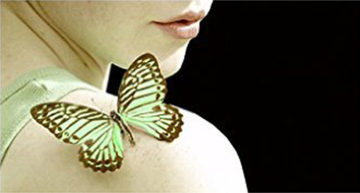Unless you’ve been living in a cave, you know exactly what the G-spot is, and you probably know where it is, too — an area on the front wall of the vagina a few inches in that, when stimulated, can result in extreme pleasure, explosive orgasms, and even female ejaculation…well, at least for some women (quite a few don’t like theirs even looked at!). Thanks to a number of studies on the anatomy and sexual response of this area over the past few decades, the G-spot has become the It Girl of female sexuality.
But what about the PS-spot? The PS-who?
That’s exactly the reaction we got when we asked a group of sexually sophisticated women and their partners about this area opposite the G-spot: “Never heard of it”, and “The G-spot is hard enough to find, let alone something with 2 letters”, and “Is that similar to treacle sponge?” If the G-spot is the It Girl, the PS-spot is its red-headed step-sister. So here’s some info to help you get to know her better, because she can really be quite nice:
- What the PS-spot is exactly: The PS stands for perineal sponge, which lies between the vagina and rectum, just beneath the perineum (that band of skin between the vaginal opening and the anus). The perineal sponge is a mass of erectile tissue, which means that when it’s stimulated, it fills with blood and becomes engorged, just like a man’s penis and a woman’s clitoris do during arousal.

- Why you’ve never heard of the PS-spot: Willful ignorance has been a long-standing tradition when it comes to female sexuality. Women were once considered practically asexual, encouraged just to lie back and think of England. Then Freud nearly ruined the clitoris for us, suggesting that orgasms gained from its stimulation were somehow “immature”. And even today there are some doctors who question the existence of the G-spot. There’s just been very little research on pleasure-related issues for women, especially those connected to the perineal sponge.
- How to stimulate the PS-spot: The best way to stimulate the PS-spot is with a finger(s) or a curved sex toy – just as is the case with the G-spot, except you apply pressure in the opposite direction (i.e. on the back lower wall of the vagina). You can also stimulate it via the perineum (pushing up) or the anus (gently pushing toward the front of the body). If you want to try getting at it during intercourse, you could try positions that direct the penis/phallus toward your back wall, such as missionary or woman-on-top with your torsos pressed together — basically, the opposite of what works best for targeting the G-spot, which is doggy style.
- What the PS-spot may feel like: Women who like this area stimulated have reported various results: reaching orgasm from its stimulation alone, enhancement of other kinds of stimulation, the extending or intensifying of orgasm, reaching orgasm quicker.
- Why you shouldn’t get too excited about the PS-spot: Whether you’re looking for the G-spot or the PS-spot, there’s definitely no guarantee that either will feel good to you. And that’s okay. It’s good just to know that these spots are a natural part of your anatomy there to be explored. If you happen to be one of those women for whom the G-spot isn’t the holy grail, then maybe the PS-spot will do it for you. If not, don’t worry — there are always other spots to try, whether they have their own catchy term yet or not. When you find one you like, name it after your own initials!

















